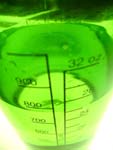
Plastic molding is the process of shaping plastic using a rigid frame or mold. The technique allows for the creation of objects of all shapes and sizes with huge design flexibility for both simple and highly complex designs. A popular manufacturing option, plastic molding techniques are responsible for many car parts, containers, signs and other high volume items.
The underlying concept of plastic molding is placing liquid polymer into a hollow mold so that the polymer can take its shape, often with various ranges of pressure and heat required. There are different plastic molding techniques available to accomplish this including rotational molding, injection molding, blow molding, and compression molding to name just a few. Each technique has its benefits and is best suited for the creation of specific items.
The history of rotational molding began somewhere between 1940 and 1950 in the USA when the process was developed for a small number of plastics. By the late 1950s, when the rotational molding process was better understood, applications for other industries were developed including road cones, marine buoys, and car armrests. A process was developed in Europe in the early 1960s that enabled large hollow containers to be created in low density polyethylene(LDPE) by rotating (or rocking) a mold on a chassis, houses open gas jets, through 30 degrees which coated the inside of the mold with the polymer…
The history of plastic injection molding has seen steady industry growth since its beginnings in the late 1800s. The technique has evolved from the production of combs and buttons to major consumer, industrial, medical, and aerospace products. In 1868, John Wesley Hyatt invented a way to make billiard balls by injecting celluloid into a mold.